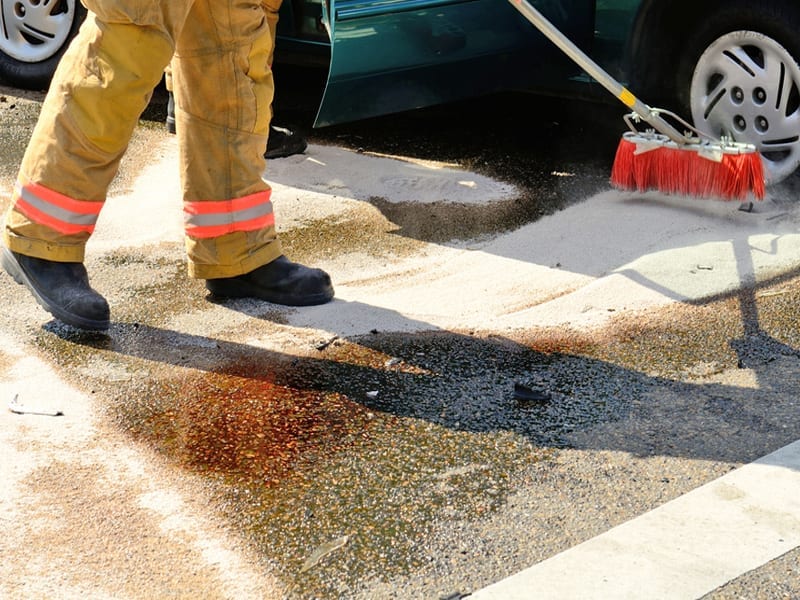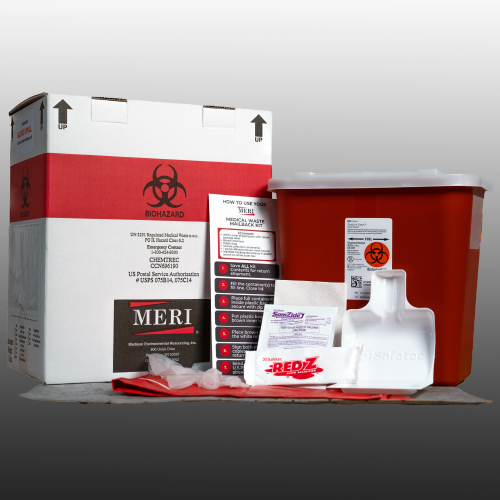Clandestine Lab Cleanup: Comprehensive Purification for Hazardous Sites
Clandestine Lab Cleanup: Comprehensive Purification for Hazardous Sites
Blog Article
Professional Biohazard Cleansing and Decontamination for Blood, Bodily Fluids, and Hazardous Products
The potential health threats connected with exposure to biohazards underscore the vital requirement for meticulous handling and extensive cleanup. As we navigate the complex landscape of biohazard cleaning, comprehending the nuances of regulations, compliance, and the customized tools at play comes to be crucial in making sure a complete and secure decontamination procedure.
Health Risks of Biohazard Exposure
Direct exposure to biohazards presents substantial wellness threats that can result in serious consequences for areas and individuals alike. Biohazards include a large range of organic materials, including blood, bodily liquids, mold, microorganisms, viruses, and various other potentially infectious materials. When individuals come right into contact with these biohazards, whether via mishaps, incorrect handling, or ecological direct exposure, they face the risk of contracting major diseases or illness.
Among the key health threats connected with biohazard direct exposure is the transmission of transmittable diseases. Bloodborne microorganisms such as HIV, liver disease B and C, and different bacteria can be present in biohazardous materials, presenting a direct danger to human wellness. Inhaling airborne biohazards like mold and mildew spores or entering call with infected surfaces can also result in breathing problems, allergies, and various other unfavorable wellness results.
Additionally, biohazard exposure can have long-lasting wellness implications, with some illness manifesting years after the preliminary call (Blood Cleanup). For that reason, it is vital to focus on appropriate biohazard cleansing and decontamination to mitigate these wellness dangers and make sure the safety of neighborhoods and individuals

Specialized Training for Biohazard Cleanup
When it comes to handling biohazard cleaning effectively and safely, specialized training plays a basic function in ensuring appropriate decontamination procedures are adhered to. Biohazard cleanup needs certain expertise and abilities to properly minimize risks connected with bloodborne virus, bodily fluids, and harmful materials. Experts learnt biohazard cleanup undergo extensive instruction on how to securely manage, remove, and dispose of biohazardous materials to stop contamination and exposure.
Specialized training for biohazard clean-up covers a variety of necessary subjects, consisting of proper personal safety tools (PPE) use, bloodborne pathogen recognition, decontamination methods, and harmful waste disposal protocols. People learnt biohazard cleanup are equipped with the essential competence to examine contamination levels, identify possible threats, and apply ideal cleanup procedures in compliance with regulative requirements.
Continual training and education are critical in the field of biohazard cleaning to remain updated on the current purification innovations, security protocols, and guidelines. By purchasing specialized training, biohazard cleaning specialists can successfully react to emergency clean-up circumstances and protect both public health and the atmosphere.
Significance of Correct Purification Techniques
Making use of correct purification strategies is essential in biohazard clean-up to efficiently get rid of harmful products and reduce wellness threats. Effective decontamination not just ensures the elimination of visible traces of blood, bodily fluids, and other biohazards yet also targets unnoticeable virus that may position severe health and wellness dangers if not correctly eliminated. By complying with strict decontamination protocols, trained professionals can substantially decrease the risk of direct exposure to hazardous bacteria, infections, and bacteria that can cause conditions or infections.
Correct decontamination techniques involve making use of specialized devices and anti-bacterials that are especially designed to counteract biohazards successfully. Detailed cleaning and disinfection of polluted areas are necessary to stop the spread of pathogens and make certain a safe atmosphere for occupants. In addition, the appropriate disposal of biohazardous waste adhering to decontamination procedures is vital in stopping contamination of various other surface areas or individuals.

Equipment and Tools for Safe Cleaning
When dealing with blood, physical fluids, or harmful products, biohazard cleaning experts count on specialized equipment to lessen direct exposure threats and thoroughly decontaminate the afflicted area. Additionally, biohazard cleansing kits including anti-bacterials, absorptive materials, and biohazard bags are utilized to securely get rid of and have of polluted items.
Advanced cleansing devices like hospital-grade disinfectants, HEPA-filtered vacuum cleaners, and misting equipments are utilized to sterilize surface areas and remove biohazards efficiently. Specialized equipment such as sharps containers and biohazard waste disposal containers are used to safely take care of sharp items and biohazardous waste products. By making use of the ideal devices and devices, biohazard cleansing experts can ensure an extensive cleanup procedure that focuses on safety and security and lessens health threats for both workers and occupants of the afflicted go to website area.
Regulations and Conformity in Biohazard Cleaning
Proper adherence to laws and compliance standards is vital in biohazard cleaning to make crime scene cleanup jobs requirements certain the security of both employees and the environment. Federal government agencies such as OSHA (Occupational Safety and Wellness Administration) and the EPA (Environmental Security Firm) have established certain standards for biohazard cleaning procedures to lessen wellness risks and environmental contamination. These guidelines cover an array of elements consisting of the handling, transport, and disposal of biohazardous products, along with the needed training and safety tools needed for workers associated with the clean-up process.
Biohazard cleaning companies must stay up-to-date with these guidelines to assure that their procedures fulfill the required safety standards. Failure to adhere to these regulations can result in extreme effects, consisting of penalties, lawsuit, and threatening the wellness of individuals and the environment. By following stringent laws and compliance steps, biohazard cleansing firms can effectively reduce dangers and make sure a secure and detailed cleaning procedure for all celebrations involved.
Final Thought
To conclude, biohazard cleaning and purification call for customized training, appropriate methods, and adherence to policies. Exposure to blood, bodily liquids, and dangerous materials postures substantial health and wellness dangers, making it critical to make use of the appropriate devices and tools for secure clean-up. By adhering to stringent protocols and standards, professionals can successfully reduce the threats linked with biohazard exposure and guarantee the safety of both themselves and others.
As we navigate the intricate landscape of biohazard cleaning, recognizing the nuances of regulations, compliance, and the specific devices at play ends up being important in making certain a risk-free and thorough purification process. (Blood Cleanup)
When it comes to taking care of biohazard clean-up efficiently and safely, specialized training plays a fundamental function in ensuring appropriate purification procedures are followed.Making use of appropriate purification strategies is Find Out More critical in biohazard clean-up to efficiently decrease and eliminate unsafe materials health threats. In addition, biohazard cleansing kits including anti-bacterials, absorptive products, and biohazard bags are utilized to safely get rid of and contain of infected things.
Government firms such as OSHA (Occupational Safety And Security and Health Administration) and the EPA (Environmental Security Firm) have actually developed specific guidelines for biohazard clean-up procedures to decrease health and wellness dangers and environmental contamination.
Report this page